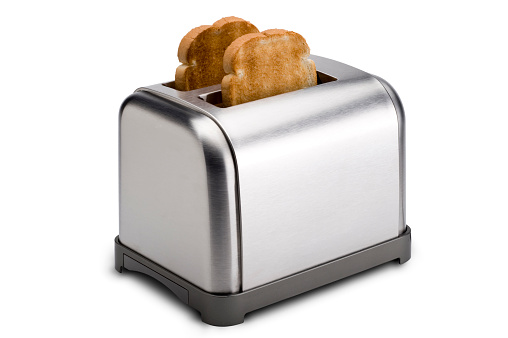Project Report For Toaster Manufacturing
Introduction
Project report for toaster manufacturing is as follows.
Toasters are regularly used kitchen appliances that are not very expensive to purchase. They are small and compact appliances that toast or heat slices of bread and other bread-like meals. Toaster manufacture in India extends back to the start of the 20th century, with the initial models imported from nations such as the United States and the United Kingdom.
As the toaster industry in India developed, manufacturers began to provide new and improved models to the market. These were toasters with built-in egg cookers and sandwich makers, as well as toasters with automatic pop-up mechanisms and variable browning controls. Toasters in various forms and colours became available, catering to the diverse tastes of Indian consumers.

The growth in toaster manufacturing in India was driven by a number of factors. One of the main drivers was the increasing demand for household appliances in India as the country’s economy began to develop and grow. The government also played a role in promoting the domestic production of toasters through import substitution policies, which aimed to reduce the country’s dependence on foreign imports.
The toaster manufacturing industry in India has also seen a lot of innovation over the years. Many manufacturers have adopted the latest technology and machinery to improve the quality and efficiency of their products. They have also started to export their products to other countries, particularly in the Middle East and Africa.
Toasters are classified into three types: pop-up, toaster oven, and toaster conveyer. We will concentrate on the pop-up toaster for this design a project.
Project Report Sample On
Toaster Manufacturing
Get Completely Custom Bankable Project Report
The Toaster Manufacturing Process
- Toaster cases are now often constructed of pressure-molded plastic. A hopper is filled with plastic pellets and heated to 350°F (177°C). The combination becomes semi-fluid as it heats up. It is then poured into and chilled in a toaster case mould. The plastic is removed from the mould once it has cooled and hardened. If the toaster case is made of aluminium, a sheet of aluminium is conveyed to a punch press via a conveyor belt. A die on the punch press quickly puts pressure on the aluminium sheet, punching out the desired size.
- The punched aluminium sheet is then fed into a backward extrusion press. The sheet is placed within a toaster-shaped die, and the press exerts a punch against it. The metal flows backwards, forming a hollow, toaster-shaped casing.
- Nichrome wire is sent in batches from a manufacturer to a toaster maker. These wires are fed into a machine that wraps them around a mica sheet automatically.
- The Nichrome-wrapped mica sheets are then returned to the production line, and two are bolted to the toaster base.
- The spring-loaded tray is positioned between the mica sheets. This tray is screwed and set by hand.
- A single bi-metallic element is attached to a support bracket, which is subsequently installed into a pivoting second bracket. In between the two brackets, a spring is inserted. When the toaster carriage assembly activates the support bracket, a stop is attached on a mounting bracket to secure it. The bimetallic element is connected to a release assembly.
- The electrical cord is threaded into the moulded plastic base. The base houses the numerous toaster pieces, such as the wire brackets and terminal board. The toaster body is then positioned over the base.
Market Potential Of Toaster Manufacturing
The global toaster market was worth USD 3.2 billion in 2018 and is expected to develop at a CAGR of 4.8% between 2019 and 2025. The growing number of hotels, coffee shops, restaurants, and cafés, together with the increased usage of the product by households, is predicted to enhance demand for the product. Additionally, rising consumer spending power is promoting industry expansion.
The market potential for toaster production in India is enormous due to the country’s large population, growing middle class, and increasing urbanisation.
The population of India is projected to reach 1.7 billion by 2050, making it the most populous country in the world. This large population creates a significant demand for consumer goods, including toasters. The expanding Indian middle class is also fuelling demand for toasters, as they become more affordable and accessible to a wider spectrum of consumers.
Urbanization is also having a significant impact on the market potential for toaster manufacturing in India. As more people relocate to cities, the demand for consumer items such as toasters rises. Consumer preferences are shifting as a result of urbanization, with more people seeking modern and convenient equipment such as toasters.
The Indian government’s focus on encouraging the manufacturing sector, as well as the Make in India initiative, have also produced a favorable atmosphere for toaster manufacture in India. The government’s initiatives to modernize infrastructure and cut bureaucratic red tape have made it easier for firms to establish operations in India. This has resulted in a rise in foreign investment and an increase in the number of companies developing toasters in India.

